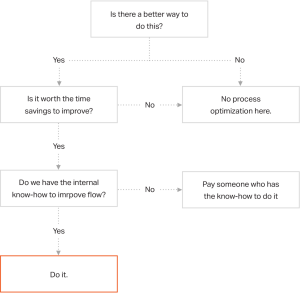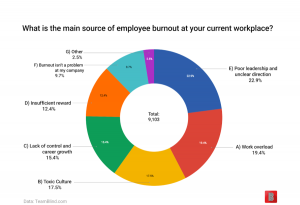— October 19, 2018

nattanan23 / Pixabay
“The ability to make good decisions regarding people remains one of the last reliable sources of competitive advantage, since very few organizations are good at it.” –Peter Drucker
What would you do if a key employee in a critical position suddenly resigned, became ill or was terminated today? Would there be a mad scramble as you tried to recover or would you be prepared to carry on in a productive manner? If your answer is the former instead of the latter, then your organization is opening itself to unnecessary risk and potentially compromising its long-term survival. How does a forward-thinking organization reduce/eliminate such unnecessary risk? They leverage a Succession Plan.
Many organizations have little or no succession planning in place and if they do, it is shrouded in secrecy with very few “in the know”. Although many say they value succession planning, the management literature suggests that up to 67% don’t utilize the process. Organizations without succession plans don’t realize that ultimately it will cost them more to replace key leaders and deal with constant turnover of talent than if they had taken the time to develop a succession plan.
Add in the differences in how the new multi-generational workforce views their careers and the need for a strong succession planning process is greatly magnified. Managing the succession of talent is an important strategic process that helps to minimize gaps in leadership and enable companies to develop and retain their best employees. Succession Planning needs to be a priority for every organization that wants to be successful in an ever-changing business environment.
This article will cover what Succession Planning is and isn’t critical elements of a plan, and a short case study of succession planning in action.
What It Is
Succession Planning is a deliberate and systematic effort by an organization to ensure leadership continuity in key/critical positions. It is a key proactive management practice that identifies, develops, and retains a pipeline of leaders for the critical organization positions in an attempt to drive operational success. It also helps to enhance the organization’s opportunity to retain and develop intellectual and knowledge capital for the future. Most practitioners would go as far as to say that Succession Planning reduces risk and is vital to the long-term survival of any business. Sounds good – right? Yet some organizations choose NOT to do succession planning! Many reasons (excuses) are given for not doing it (the CEO already knows, takes too much time to manage the process, things change too frequently, etc.), but most ring hollow.
What It Isn’t
Sometimes, knowing what something isn’t may be more helpful than knowing what it is. In this case, Succession Planning isn’t just something that is done when the CEO or another Key Leader is exiting the organization and a mad scramble takes place to find an internal candidate. It is not just done to meet some type of Board of Directors requirement – check the box. And it shouldn’t be treated as some type of top secret intelligence report with only a select few knowing the details. It isn’t an assumption that the next in line in a given department or corporate structure is the successor. Yet, we have all worked at organizations that do all of this. Again, why take such unnecessary risk?
Common Critical Elements: Steps in the Succession Planning Process
Good, proactive organizations devise models to characterize their succession and development practices. Most reflect a cyclical series of activities that include these fundamentals:
- Identifying key roles for succession planning (critical positions)
- Defining the competencies and motivational profile required to undertake those critical roles
- Assessing people against these criteria
- Identify pools of talent that could potentially fill and perform highly in key roles (internal and external candidates)
- Developing leaders to be ready for advancement into key roles – primarily through the right set of experiences
Many practitioners and organizations overthink and over-complicate Succession Planning. Truly, it doesn’t need to be that difficult. Once you have the buy-in from the top of the organization, which is the most critical element and sometimes the most difficult to achieve, the rest of the process is manageable.
6 Steps of Succession Planning
The most common Succession Planning process consists of six steps:
- Identify the critical positions in the organization: You will need to determine how deep into the structure you want to succession plan. If it is your first time, you may want to limit it to the very top or one layer down. Yes, there will be critical positions below the top leadership that you may ultimately want to include in the planning, but not in the first go-around. Positions farther down the structure can be added in future years, once the participants are familiar with the process. The key to success in this step is to have an agreed upon definition of how the organization is defining a “Critical Position”. Many organizations define a critical position as one that without, the organization would be unable to effectively meet its business objectives. It is considered “mission critical”. Notice that it doesn’t say Critical Person. Focus on positions, not people.
- Identify the competencies for each of the Critical Positions (Knowledge, Skills, Abilities – KSAs): It is important that everyone who is participating in the process be acquainted with what KSAs are needed to perform in the role. Having a clear understanding of the KSAs is needed to ensure successful performance in the critical positions, for guiding learning & development plans, for setting clear performance expectations, and for assessing performance. The key to success in this step is to make certain your focus is on the future not the current as it relates to the KSAs.
- Identify High Performers and High Potentials – Assessment of Talent: I remember asking a college football scout for a highly successful college football team how the team was able to amass so many talented players on one team. He smiled and said, “we have a great evaluation process and we stick to it”. Could it be that simple? Yes! There are numerous ways to assess your talent. Some use the traditional Nine-Box Tool, while others use some variation of it. The keys to success in this step are to use a tool that allows you to assess both performance and potential, one that is easily understood by the raters, one that includes key analytics from performance (turnover, engagement, budget management, etc.) and then “stick to it”.
- Develop Leaders (Talent Management): The biggest mistake some organizations make is stopping after Step 3. Successful organizations recognize talent management as a core business process with impact on overall business and financial success. They insist that individual leadership development plans be created for each leader identified as a potential successor for a critical position. There are several keys to success in this step. The first is to ensure that there is a balanced approach to the development with equal emphasis on Leadership IQ and EQ. The second is to utilize a blended approach to the development. Some organization use a 70-20-10 approach: 70% on the job experience, 20% social learning, 10% formal learning. The final key is to strive to make developing leaders a part of the business culture.
- Develop & Implement the Plan: By this point in the process, you should have all of the needed information to fully develop the formal succession plan. List each critical position and rank order the internal talent for each position. Some organizations create levels under each position by the readiness level of potential successors.
For example: Critical Position: Director of Human
Resources
Incumbent in role: ______________
Readiness 1-2 years: __________
Readiness 2-3 years: __________
Readiness 3-5 years: __________
Readiness 5+ years: __________
The keys to success in this step are to not force people into boxes if they aren’t ready, to develop recruitment plans if there is no internal talent for a critical position, and to review & update the process on at least an annual basis. - Monitor and Evaluate Effectiveness: Finally, to ensure that your succession planning efforts have been successful, it is important to systematically monitor your important workforce analytics, evaluate development activities and performance, and make adjustments as needed. Organizations who have benefited from succession planning are those who build periodic check-ins into their planning process. Success in this area boils down to just one thing – being disciplined enough to do it.
Succession Planning In Action
The following is a case study of how the 6 Step Succession Planning has worked:
- Mid-sized company with an engaged Board and Executive Team
- Strong support for doing Succession Planning by the Board Chair and CEO
- Executive Team defined Critical Positions, key KSAs, and Leadership Competencies and affirmed that all were aligned with the organization’s Strategic Plan
- Developed an Evaluation Tool (Nine Box with organization-specific definitions) to be used for the assessment phase of the process
- Assessed all leadership talent using the nine box and divided leaders into three categories: Green (worthy of consideration for higher level positions and further development), Yellow (solid performers with limited potential for higher level positions), and Red (need performance improvement or exited)
- Identified all Critical Positions (N=15)
- Bench strength assessed for all Critical Positions (Succession Charting)
- Development Plans created for all High Performers and High Potentials (N=12)
- Quarterly updates to the Board of Directors
Five Year Results:
- Successful CEO transition with internal candidate
- High stakeholder and staff support and engagement
- 8 of 12 High Performers and High Potentials retained and filled Critical Positions
- Successful recruitment of outside talent to fill remaining Critical Positions
- Internal Talent Management Program developed and maintained
- Succession Planning now done on all levels of leadership with positive results
- Turnover reduced and the organization is now an Employer of Choice
Conclusion
SUCCESSion Planning is a trademark of the ultra-successful organizations, regardless of their size. Not having a succession plan can undermine an organization’s effectiveness and its business sustainability. Without a succession planning process, your organization may not have a means of ensuring that the programs and services that are crucial to its survival are able to be sustained beyond the leadership of those who are currently responsible for them. Why take that risk? Succession Plan. There is a reason Succession Planning starts with the word “SUCCESS.”
Business & Finance Articles on Business 2 Community
(66)








